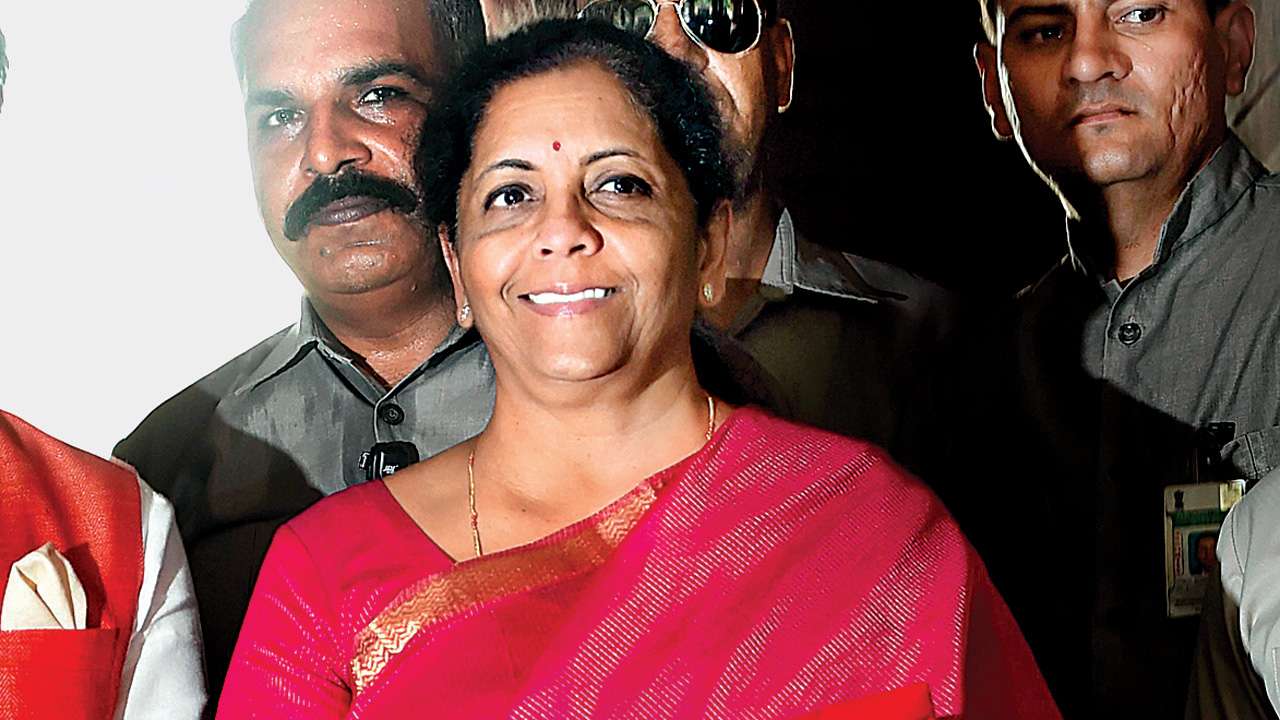
This year’s Budget broke with tradition in less and more important ways. To begin with the less important, it was a budget without a “budget”. The latter word comes to us from the Old French bougette meaning a leather bag. The original Latin is bulga, from which we have the modern word bulge. Whether or not Finance Minister Nirmala Sitharaman’s Budget shows a bulge in expenditure or taxation is simply answered by “No”. Even if not visionary or transformative, it does not seem like an inflationary or populist jumla.
This sensible, workmanlike Budget does have one important, if obvious, difference. It should be better characterised as workwomanlike—for Sitharaman is India’s first lady finance minister. The FM came dressed in a sari sans the fabled, if not fabulous, briefcase, which was the sine qua non of earlier FMs. It is that briefcase, which earlier used to be a leather bag, which gave the Budget its name. What sops or shocks it hid was often a matter of as much curiosity or speculation as actual plan of income and expenditure that the government placed before the House. Sitharaman had no briefcase, but instead, posed for photos with a ledger. That, for symbolism hunters, signifies the no-nonsense registry of the achievements and plans of the government that she presented in her speech.
So much for the visual signalling. As to the sonics, especially the customary couplets, allusions, and literary references, which have become so staple to Indian Budget speeches, she quoted Urdu couplets of Manzoor Hashmi, Swami Vivekananda on women’s empowerment, Kautilya’s Arthasastra, and the Tamil Sangam classic, Purananuru. She also referred to 10th century Karnataka saint-reformer Basava’s notion of Kayakave Kailasa (work is worship) as the first instance of the Kalyana Rajya (welfare state). Of all these quotations, I found the lines from Yaanai Pugundha Nilam of Pisirandhayar most striking, not just because they pertained to taxation, a subject so touchy and troublesome to the middle classes. The poet says, “An elephant will be happy to have two mounds of rice from a paddy field. But if it enters the fields, it will have far less to eat than it will trample.” For those who didn’t understand, she elaborated, “This is the principle we will follow in taxation. We will be happy to collect only that much taxes that is necessary from the taxpayer. We will not trample on the taxpayer.” But the couplet can be read much more widely and profoundly as a statement on the nature of governmentality itself.
Coming to taxes, ordinary wage-earners will be relieved that the present slabs and rates of income tax remain unchanged. Of course, the rich will be taxed more, which may lead to some underreporting and suppression of income. We haven’t still recovered, it seems, from the socialist hangover of making the rich feel guilty. Worse, this government has increased taxes on fuel and gold. The former, without adequate progress in retailing e-transport alternatives, will pinch our pockets. The latter will encourage smuggling. Given our age-old gold lust, gold prices in India should be competitive with the rest of the world if not among the lowest; moreover we also export gold ornaments, which will be hit by this additional burden.
The best part of the Budget is the push to improve infrastructure and agriculture, both crucial not just to our economy but to our society. This is bound to boost rural income, as also provide a huge impetus to investment. The Jal Shakti Ministry is an innovation whose time has come. Without managing our water resources properly, we are looking at terrible shortages if not water wars in the near future. At the same time, the “Jal Jeevan Mission” will offer a fillip to rural spending just as toilet construction did during the last five years. We have also to ensure, however, that this precious resource is not wasted when “Har Ghar Jal” is translated into reality.
This brings us to the heart of the matter. How should common Indians judge Budgets? Surely not just by the litany of the government’s achievements, bedecked with facts and figures. Nor by lofty promises, announcements of schemes and plans galore. If there is one word to sum up a yardstick of measurement, it should be svaraj. Does this Budget contribute to svaraj, that is to the empowerment and ease of living of “we the people”? The answer is, “Yes it does, even if not enough.” Sitharaman’s Budget is a balancing act which will push us towards the $5-trillion economy mark without making too many radical departures or moves. The populace, rather than government, should be the chief change-agent. But is that really happening or are we becoming more and more statist? That is the crux of the matter.
The author is Director, IIAS, Shimla
Views are personal.